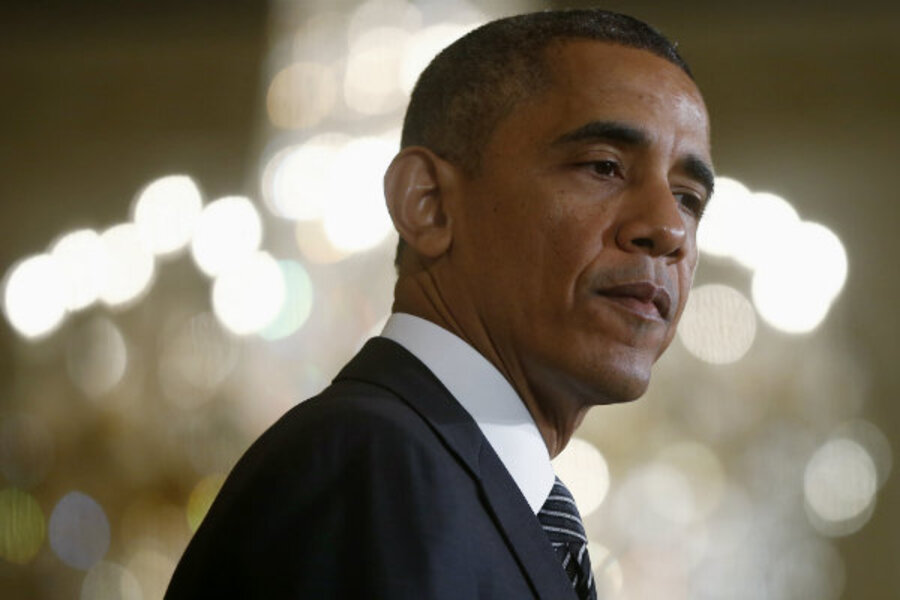Obamacare can't make sense in a divided America
Loading...
This article was originally published at The Conversation.
To people in other nations, the US debate over health-care reform, including the recent federal government “shutdown,” must have been bewildering. Such dismay is augmented by the fact that the Obamacare website, Healthcare.gov, has experienced a very traumatic birth, with fewer than 1 in 100 people who visit it actually managing to enroll in the new programs. The government is responding with a “tech surge”.
Some consequences of Obamacare are more local. My university just terminated 50 employees to avoid costs associated with the new law. Those who lost their jobs were maintenance and custodial workers, for whom the university would have been obliged to provide health insurance or face fines that can range up to $3,000 per worker. As is so often the case, federal legislation intended to help the less fortunate has turned out to harm some of those it sought to aid. Yet more dismay.
Part of the explanation for these problems is the extraordinary complexity of the law, which is often poorly understood even by those who are attempting to implement it. Signed into law as the Affordable Care Act in March 2010, Obamacare represents the most sweeping US healthcare legislation since the creation of Medicare and Medicaid, which fund care for the elderly and the poor, in 1965. In total, the Affordable Care Act runs to more than 10,500 pages.
Patchwork healthcare
Why is Obamacare so complex? Proponents point out that short of creating a new federal healthcare system, any US attempt to insure the uninsured would inevitably prove highly complicated. Unlike most other industrialized nations, the US healthcare system relies primarily on employer-based insurance, instead of a government-financed system. And insurance is regulated by the 50 states. So Obamacare inevitably represents the application of a new patch to an already complex patchwork.
The law actually has three primary purposes: to lower the numbers of uninsured, make care more affordable to those who need it, and reduce health-care costs. Such objectives are difficult to argue with, particularly in a nation that leads the industrialised world in the percentage of its citizens who cannot afford care, yet which spends far more per capita on healthcare than any other nation – 18 percent of GDP, while for other comparable nations the number is less than 12 percent.
A nation split
But the controversy and fierce antagonism surrounding Obamacare are nothing new in the United States. In the US system, the legislative branch makes and funds laws, while the executive branch bears the responsibility of implementing them. The founders of the US system of government, men such as Alexander Hamilton and James Madison, envisioned a system of checks and balances, in which each of the three branches of government (judiciary included) would impede the will of the other.
Some Americans look around the country and see many disadvantaged people unable to obtain and pay for adequate medical care. Moved by the suffering of their neighbors, they naturally think there ought to be a law ensuring that everyone has access to care. Others see vast inefficiencies in health care, and believe steps must be taken to reign in the huge increases in health-care costs that the US traditionally experiences each year. Such people are likely to support Obamacare.
But other Americans look around and see a bloated federal government choking the US economy and infringing on economic and political liberties. They believe Washington has become too influential already, and federal programs such as Obamacare only increase the reach of an already intrusive government. They worry the US is becoming a “nanny state”, where people look to the government to solve their problems.
If you want a federal government that is united, efficient, and nimble, then the US Constitution makes no sense. On the other hand, if you believe social good cannot or should not be provided by the federal government, and that far from maximizing the government’s ability to provide benefits the most important function of the Constitution is to prevent government’s excessive expansion, the current political climate may seem less perverse.
Those who expect the government to do more to help those in need look on the current Washington political climate as dysfunctional, heaping blame on those obstructing the compassionate will of the people to do more to help the disadvantaged. Those who believe that the government is doing too much already and instead needs to be trimmed back regard the same impasses with satisfaction, believing that they further tarnish an overweening government’s reputation.
In short, the bewildering US healthcare debate, including the government shut down, isn’t quite as incomprehensible as it first appears. Americans are not united in a desire for more and better government, including federally mandated health care. Many Americans actually want less government, and they are willing to use whatever means they have at their disposal to thwart what they see as an un-Constitutional and even un-American expansion of government’s reach. Health care is just the latest issue to get in the middle of a centuries-old argument.
Richard Gunderman is professor of radiology, pediatrics, medical education, philosophy, liberal arts, and philanthropy at Indiana University, where he also serves as vice chair of Radiology. Among other awards, he received the 2012 Robert Glaser Award, the highest teaching award of the Association of American Medical Colleges. His most recent books are “Leadership in Healthcare” (Springer 2009) and X-ray Vision (Oxford 2013).
Mr. Gunderman does not work for, consult to, own shares in, or receive funding from any company or organization that would benefit from this article, and has no relevant affiliations.







